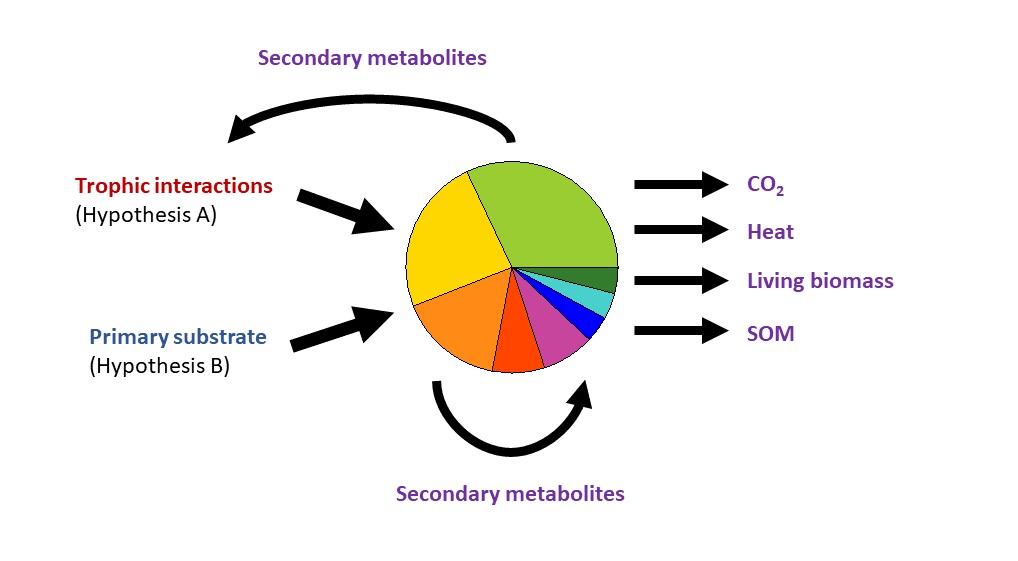A synthetic community approach to test how energy and matter fluxes are modulated by trophic interactions and the primary energy substrate in soil

Soils are essential to sustain life in terrestrial ecosystems. However, a conceptual framework that describes how the structural and functional diversity of the soil microbiome and its interaction to higher trophic levels influences energy and matter fluxes in soil is still largely missing. We propose to use a synthetic soil community reflecting the major microbial taxa and microbial grazers in soil to study causal relationships between the energy and matter input to soils, the structure and function of the soil microbiome, and the resulting energy and matter fluxes. A 25-member synthetic soil community was designed for this purpose consisting of members of the Proteobacteria, Acidobacteria, Actinobacteria, Bacteroidetes, Verrucomicrobia, Chloroflexi and Gemmatimonadetes as well as a typical soil ascomycete. Grazers will be represented by bacterivorous and fungivorous nematodes as well as bacterivorous myxobacteria. The proposed work will be performed in two work packages (WP). In WP1, we will test in a joint multidisciplinary research platform with six other SPP partners hypothesis A of the SPP: The microbiome modulates energy dissipation and matter turnover along various energy use channels. The focus of this proposal will be to analyze the effect of bacteria-feeding grazers and grazer competition on the microbiome structure and resulting carbon fluxes, carbon pools, and heat dissipation using the synthetic soil community approach. In parallel, we will identify effects of functional groups of grazers (bacterial vs. fungal) on microbiome structure, carbon fluxes, and heat dissipation in a natural soil community setting. In WP2, we will use the synthetic soil community approach to test hypothesis B of the SPP: Energy and matter input, discharge, and consumption in the soil system affect biological complexity. Here, we aim to understand how model substrates with different energy yield and degradability (cellulose, starch) affect the structure of the synthetic soil community, with and without the influence of grazers. Furthermore, we will explore how the primary energy substrate shapes chemical defense mechanisms (secondary metabolites) expressed by microbiome members and indirectly impacts carbon fluxes and pools as well as heat dissipation. We propose that a synthetic soil community will be an essential step towards a concept-driven understanding of ecological interactions in soils. It will help to reduce the overwhelming complexity of natural microbial communities while providing defined structure-function relationships in a controlled setup. This true systems ecology approach will contribute to understand how energy and carbon flow is modulated by the soil microbiome & higher trophic levels (WP1) and the primary energy substrate (WP2).
Link to English scientific abstract
Link to German scientific abstract